Introduction
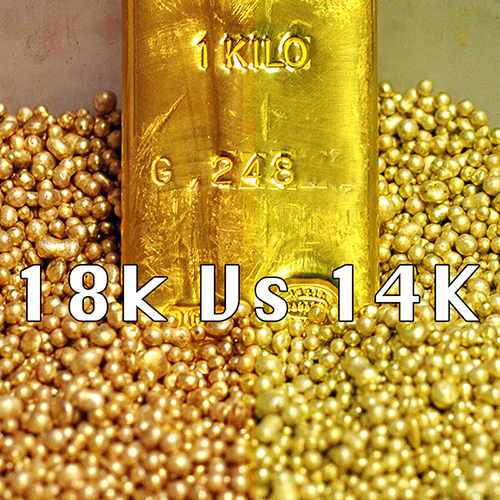
Gold jewelry is a symbol of luxury and adornment, because of its aesthetic appeal and enduring value.
Selecting the right gold purity is crucial for influencing the jewelry’s appearance and investment value.
Common purity levels include 24K, 22K, 18K, and 14K, with 24K being the purest. Higher karat gold has a richer color but may be softer and more susceptible to scratches.
Understanding the significance of gold purity is essential for making an informed purchase.
Transitioning into our main focus, comparing 14K and 18K gold can help determine the best choice for your specific needs.
What Is Gold Karats?
Gold karat is a measure of gold purity or fineness, denoted by “K” or “kt” and representing the proportion of pure gold in an alloy, with 24K representing pure, unalloyed gold.
For example:
- 24K gold is 100% pure gold.
- 18K gold is 75% pure gold (18 parts pure gold out of 24).
- 14K gold is 58.3% pure gold (14 parts pure gold out of 24).
- 10K gold consists of 41.7% pure gold(10 parts pure gold out of 24)
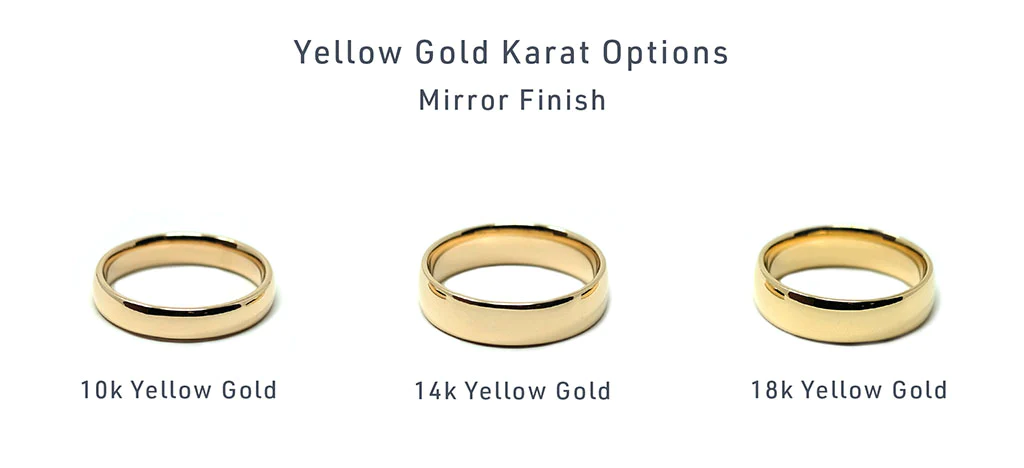
Gold karats matter for several reasons:
- Purity and Value: The karat of gold directly affects its intrinsic value. Higher karat gold contains more pure gold and is therefore more valuable per gram.
- Durability: Lower karat gold, such as 14K, is alloyed with other metals like copper or silver to increase durability. This makes it less prone to scratches or dents, making it suitable for everyday wear.
- Color and Appearance: Different karats of gold have varying shades and colors due to the presence of alloying metals. Higher karat gold often has a richer and warmer color, while lower karat gold may appear slightly paler.
- Allergies and Skin Sensitivity: Some individuals may be sensitive to certain alloying metals used in lower-karat gold. Higher karat gold, with a higher percentage of pure gold, is less likely to cause skin irritation.
- Price: The karat of gold significantly influences the price of the jewelry. Higher karat gold jewelry is generally more expensive due to its higher gold content.
What’s the difference between 14k and 18k gold?
14K Gold
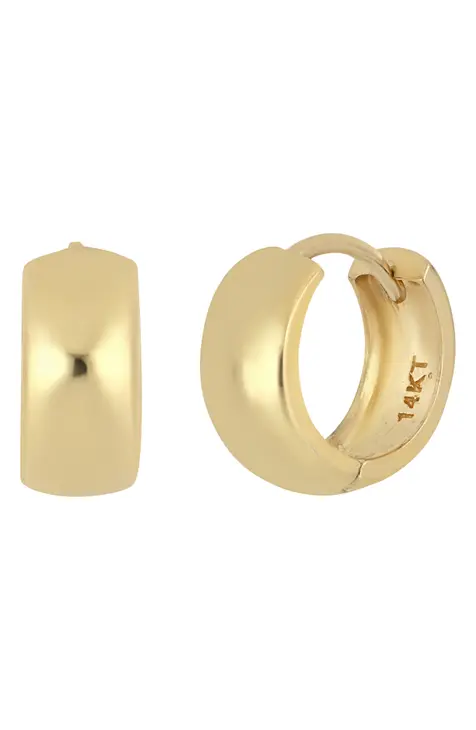
- Composition: 14K gold contains 58.3% pure gold, with the remaining 41.7% consisting of alloying metals such as copper, silver, or nickel. This alloy mix enhances durability.
- Durability: 14K gold is more durable than higher karat options due to the presence of alloying metals. It is less prone to scratches and dents, making it suitable for everyday wear.
- Lifestyle: Ideal for those with an active lifestyle or who plan to wear their jewelry frequently.
- Cost: 14K gold is more affordable than higher karat options because it contains less pure gold.
- Color: It has a slightly paler color compared to higher-karat gold, often described as a warm yellow.
- Quality: While it may have a slightly lower gold content, 14K gold is still of high quality and offers good value for its durability.
- Popularity: 14K gold is popular for engagement rings and other pieces intended for daily use due to its balance of durability and affordability.
18K Gold
- Cost: 18K gold is more expensive than 14K gold due to its higher gold content.
- Color: 18K gold has a richer, deeper color and often appears more vibrant and luxurious.
- Composition: 18K gold consists of 75% pure gold, making it purer than 14K. The remaining 25% comprises alloying metals.
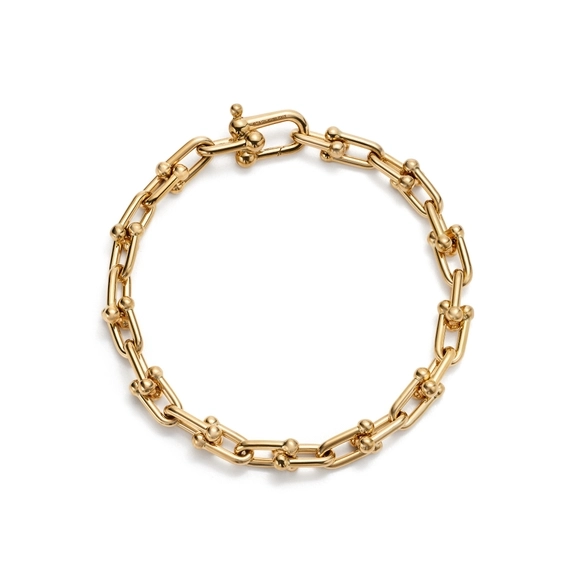
- Durability: It is less durable than 14K gold due to its higher gold content, making it more susceptible to scratches and wear.
- Lifestyle: Suitable for special occasions and jewelry items that won’t be subjected to rough daily wear.
- Quality: It is considered high-quality due to its higher gold content, making it an excellent choice for fine jewelry.
- Popularity: 18K gold is favored for its elegance and luxury, often used in high-end and heirloom pieces.
18K Gold: Advantages and Disadvantages
Advantages of 18K Gold
- Higher Purity: One of the primary advantages of 18K gold is its higher purity, containing 75% pure gold. This purity level gives it a luxurious and vibrant color, making it exceptionally attractive for jewelry.
- Elegant Appearance: Jewelry made from 18K gold tends to have a richer, deeper color and a more luxurious appearance.
- Resale Value: Due to its higher gold content, 18K gold jewelry tends to retain its value well over time, making it a potential investment.
- Ideal for Special Occasions: Its exquisite appearance makes 18K gold perfect for special occasion jewelry like engagement rings and fine necklaces.
Disadvantages of 18K Gold
- One of the main drawbacks of 18K gold is its lower durability.
- The higher gold content also means higher prices.
14K Gold: Advantages and Disadvantages
Advantages of 14K Gold
- Durability: One of the primary advantages of 14K gold is its durability. This makes it suitable for everyday wear.
- Affordability: 14K gold is typically more affordable than higher karat options like 18K or 22K gold due to its lower gold content.
- Wider Range of Colors: The alloying metals in 14K gold can create a broader range of colors, from traditional yellow gold to rose gold or white gold.
- Suitable for a Variety of Jewelry: 14K gold is a versatile choice for various types of jewelry, including engagement rings, necklaces, bracelets, and earrings.
Disadvantages of 14K Gold
- 14K gold has less pure gold content than you desire.
- It may have a slightly paler color compared to higher karat options.
14K Gold vs. 18K Gold: Which is best?
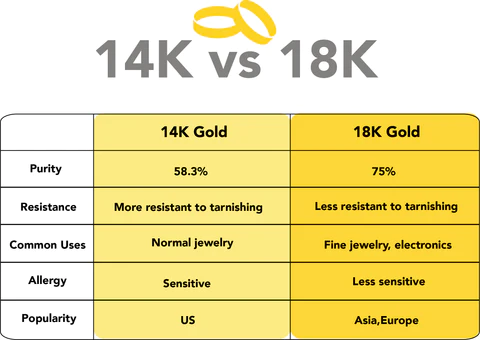
Gold Content
14K Gold: Contains 58.3% pure gold. The remaining 41.7% consists of alloying metals, which provide strength and durability.
18K Gold: In contrast, it contains 75% pure gold, making it purer than 14K. This higher gold content gives it a more luxurious appearance.
Color:
14K Gold: Due to the alloying metals, 14K gold may have a slightly paler or warmer color compared to 18K gold. It offers a wider range of color possibilities, including rose gold and white gold.
18K Gold: Known for its rich, vibrant color, 18K gold has a deeper yellow hue that many find luxurious and elegant.
Durability
14K Gold: Offers superior durability compared to 18K gold. The higher proportion of alloying metals makes it more resistant to scratches and everyday wear and tear, making it suitable for active lifestyles.
18K Gold: While still durable, 18K gold is softer than 14K gold due to its higher gold content.
It may be more prone to scratches, making it better suited for special occasion jewelry.
Price
14K Gold: Typically more affordable than 18K gold. If you’re working with a budget or want to invest in multiple pieces, 14K gold is a cost-effective choice.
18K Gold: Commands a higher price due to its higher gold content and the luxurious appearance it offers. It’s an investment in both value and aesthetics.
Allergies and Skin Sensitivity
14K Gold: Generally hypoallergenic and less likely to cause skin irritations, making it a safer choice for individuals with sensitive skin.
18K Gold: While also relatively hypoallergenic, some individuals may still experience skin sensitivities due to the alloying metals present.
Occasion and Style
14K Gold: Versatile and suitable for various types of jewelry, from everyday pieces to statement accessories.
18K Gold: Ideal for special occasions, formal events, and when you want to make a luxurious statement with your jewelry.
Which Gold Is Best For Engagement & Wedding Rings?

- Personal Preferences, Lifestyle, and Budget: The choice of gold for engagement and wedding rings hinges on personal preferences, lifestyle considerations, and budget constraints.
- Appearance: 18K gold is renowned for its opulent, deep color that many find perfectly suited for engagement and wedding rings. If the rich color is a top priority and careful handling is acceptable, 18K gold can be a compelling option.
- Budget Considerations: 14K gold tends to be more budget-friendly compared to 18K gold due to its lower gold content.
- Style Preferences: Your individual style and aesthetic preferences are paramount.
Which “K” and Color Is Better For You?
Karat (K):
Durability: Consider how you plan to wear the jewelry. If it will be subjected to daily wear and tear or if you have an active lifestyle, opt for higher karat gold (14K) for its greater durability.
On the other hand, lower karat gold (18K) may be more suitable for special occasion pieces, ensuring that your jewelry choice aligns with the demands of your lifestyle and the intended use of the piece.
Budget: Your budget plays a significant role in your choice. Higher karat gold tends to be more expensive due to its higher gold content. Decide how much you’re willing to invest in your new jewelry.
Appearance: Think about the visual characteristics you desire. Higher karat gold (18K) often offers a deeper and richer color, while lower karat gold (14K) can have a slightly paler or warmer hue. Consider which color appeals to you more.
Color:
Personal Style: Your style and preferences should guide your decision. Some individuals prefer the traditional yellow gold, while others may lean towards the trendy rose gold or the classic elegance of white gold. Choose a color that complements your overall style.
Coordination: Think about how the new piece of jewelry will fit with your existing jewelry collection. If you plan to wear it alongside other pieces, ensure that the color harmonizes with your current accessories.
Skin Tone: Your skin tone can affect how a particular gold color appears on you. Generally, warmer skin tones tend to complement yellow gold, while cooler tones may work well with white gold or rose gold.
Intended Use
Everyday vs. Occasional Wear: Consider whether the jewelry will be an everyday staple or reserved for special occasions.
Everyday pieces may benefit from the durability of lower karat gold, while special occasion jewelry can embrace the luxuriousness of higher karat gold.
This decision can significantly impact the longevity and aesthetic appeal of your jewelry collection.
Jewelry Type: Different types of jewelry may warrant different karats and colors. For instance, engagement rings, which are symbols of enduring love and elegance, are often crafted in 18K gold.
In contrast, more casual bracelets or necklaces, intended for everyday wear, may be created in 14K gold.
These distinctions in karat and color ensure that each piece of jewelry suits its intended purpose and complements the wearer’s style and preferences.
Skin Sensitivity:
Allergies: If you have known skin allergies or sensitivities, opt for a gold type that is hypoallergenic.
Both 14K and 18K gold are generally safe for most people, but individuals with extreme sensitivities may want to consider 18K gold due to its higher gold content.
FAQ’s
The gold content does not fade because gold is a nonreactive metal. It’s not very common to see an 18k gold fade, but it can happen due to the alloy mixed in it.
18k gold, which contains 75% pure gold, will weigh more than 14k gold.
14K gold is the most popular choice for engagement and wedding rings. Whether yellow, white or rose, 14K’s mix of purity and durability makes it an ideal choice for these rings since they are geared for everyday wear.
The choice between 14K and 18K gold depends on your priorities. If durability, affordability, and everyday wear are key, 14K gold is a strong choice. On the other hand, if you seek a richer color and are willing to handle it with care, 18K gold offers luxurious elegance.
Read more…….
